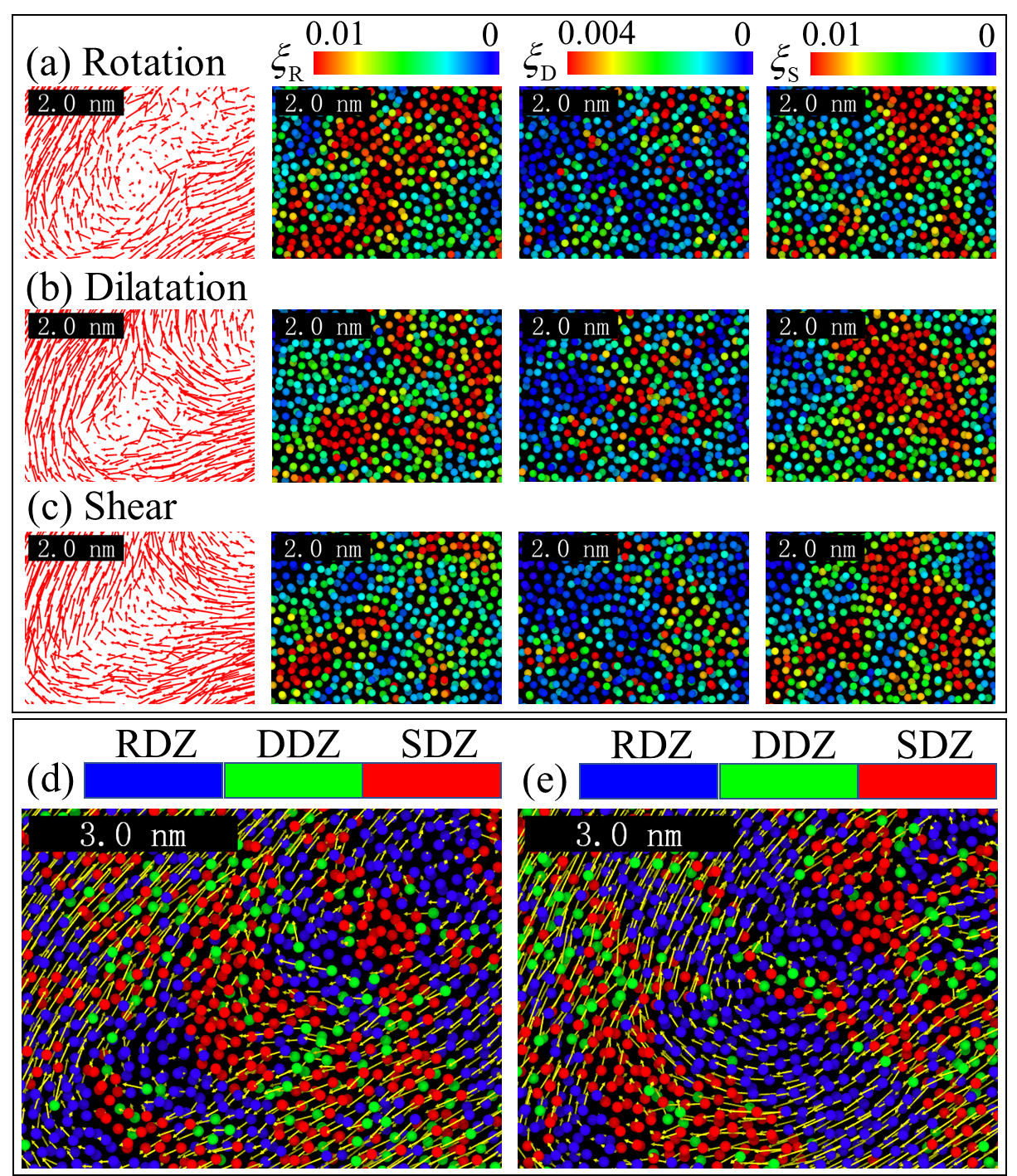Due to the intrinsic entangling of three elementary local atomic motions: shear, dilatation and rotation, the precise understanding of shear banding emergence in amorphous solids is still a mystery, causing an urgent challenge in the condensed matter physics and solid-state community.
Recently, researchers from the Institute of Mechanics of the Chinese Academy of Sciences have settled this issue through decoupling and quantitatively characterizing the highly entangled shear, dilatation and rotation flow units.
Related results were published in Physical Review Research.
Here, a new theoretical protocol, namely two-term gradient (TTG) model, which covers both affine and non-affine components of deformation is proposed for the first time to demonstrate the plastic behavior in disordered materials.
This unprecedented combination gives rise to a much more comprehensive and more effective description of local deformation field beyond the conventional, pure affine or non-affine model.
Based on this theoretical framework, the highly entangled shear, dilatation, and rotation events are successfully decoded. Thus, with the unprecedented spatial and temporal resolution, the plastic behavior can be demonstrated comprehensively as the operative manipulation of newly defined shear-dominated zones (SDZ), dilatation-dominated zones (DDZ) and rotation-dominated zones (RDZ).
Following this three-unit atomistic demonstration, the intuitive physical picture from initially synchronous motion to the onset of localized shear band is unveiled, manifesting as the percolating process of localized plastic regions with critical power-law scaling nature akin to classical percolating theory.
These findings provide important insights into the understanding of plastic behavior in disordered materials.

Quantitative characterizations of shear, dilatation and rotation motions in shear bands via the TTG model.